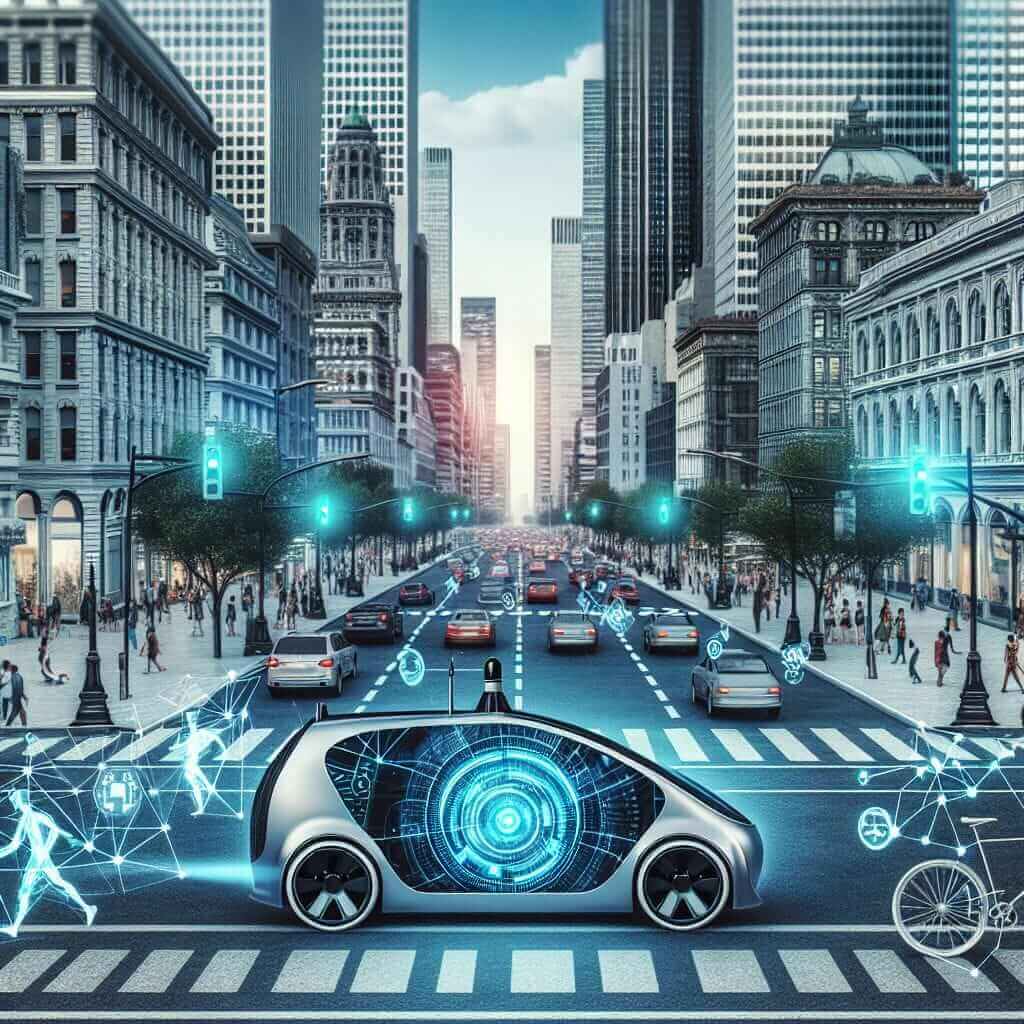The IELTS Reading test is designed to assess a range of reading skills, from understanding the main idea through to understanding detailed arguments and claims. The topic of autonomous vehicles (AVs) has become incredibly relevant in recent times due to rapid technological advancements and their potential to revolutionize transportation. Given its growing importance, it’s wise to be familiar with such topics for the IELTS exam. In this article, we will explore the implications of autonomous vehicles on transportation and provide a comprehensive IELTS Reading practice test with questions and answers.
What Are the Implications of Autonomous Vehicles on Transportation?
Reading Passage
The emergence of autonomous vehicles (AVs) has the potential to transform the transportation landscape dramatically. Several factors, including improved safety, increased mobility, and environmental benefits, among others, highlight the profound implications AVs have on society.
Safety Enhancements
One of the most significant benefits of AVs is the enhancement of road safety. Human errors account for approximately 94% of traffic accidents. Autonomous vehicles, equipped with advanced sensors and algorithms, can drastically reduce the likelihood of accidents by adhering to traffic rules and reacting to real-time conditions without the distraction or fatigue that affects human drivers.
Increased Mobility
Autonomous vehicles also offer increased mobility options for various demographics, particularly the elderly and disabled. With self-driving cars, people who previously could not drive can now travel independently. This increased mobility can lead to greater social interaction and access to essential services, thus improving the quality of life.
Economic and Environmental Impact
From an economic perspective, AVs could reduce transportation costs significantly. They promise to lower fuel consumption through optimized driving patterns and reduced congestion, which in turn may lead to decreased greenhouse gas emissions. Furthermore, the rise of ride-sharing AVs could contribute to a reduction in the number of private vehicles on the road, further alleviating traffic congestion and environmental strain.
Challenges and Concerns
Despite the numerous benefits, there are also substantial challenges and concerns associated with the widespread adoption of AVs. One such concern is cybersecurity. Autonomous vehicles rely heavily on software, making them susceptible to hacking. Additionally, there are regulatory and ethical questions that need addressing. For instance, in unavoidable accident scenarios, how should an AV prioritize the safety of its passengers versus pedestrians?
Future Prospects
The future of autonomous vehicles appears promising, yet it is laden with uncertainties. With rapid advancements in AI and machine learning, it is expected that AVs will become increasingly sophisticated and reliable. Governments and policymakers must collaborate with tech companies to create a regulatory framework that ensures safety, security, and ethical considerations are met.
 Autonomous Vehicles and Transportation
Autonomous Vehicles and Transportation
Questions
- Multiple Choice
Based on the reading passage, which of the following is NOT listed as a benefit of autonomous vehicles?
- A) Enhanced road safety
- B) Increased mobility for the elderly
- C) Elimination of all road accidents
- D) Reduced fuel consumption
-
True/False/Not Given
- Human errors account for approximately 94% of traffic accidents. (True/False/Not Given)
- Autonomous vehicles will eliminate the need for traffic regulations. (True/False/Not Given)
- The rise of AVs will increase private vehicle ownership. (True/False/Not Given)
-
Matching Information
Match the following implications of autonomous vehicles with the corresponding categories:
-
- Reduced greenhouse gas emissions
-
- Cybersecurity risks
-
- Increased social interaction
A) Economic and Environmental Impact B) Safety Concerns C) Increased Mobility
Answer Key
- Multiple Choice: C) Elimination of all road accidents
- Explanation: The passage mentions that AVs drastically reduce the likelihood of accidents but does not claim they will eliminate all road accidents.
-
True/False/Not Given:
-
Human errors account for approximately 94% of traffic accidents. (True)
-
Autonomous vehicles will eliminate the need for traffic regulations. (Not Given)
-
The rise of AVs will increase private vehicle ownership. (False)
-
Explanation: The answers are based on the information directly provided or inferred from the passage.
-
-
Matching Information:
-
- Reduced greenhouse gas emissions – A) Economic and Environmental Impact
-
- Cybersecurity risks – B) Safety Concerns
-
- Increased social interaction – C) Increased Mobility
-
- Explanation: Each matched correctly to the category they belong to from the passage.
Common Mistakes to Avoid
- Reading Too Quickly: Missing key details by skimming too rapidly.
- Misinterpreting Questions: Confusing “Not Given” with “False.”
- Overlooking Context: Ignoring the overall theme and context to infer correctly.
Vocabulary Focus
- Implication (n): /ˌɪm.plɪˈkeɪ.ʃən/ – The conclusion that can be drawn from something although it is not explicitly stated.
- Algorithm (n): /ˈæl.ɡəˌrɪð.əm/ – A process or set of rules to be followed in calculations or other problem-solving operations.
- Demographics (n): /ˌdem.əˈɡræf.ɪks/ – Statistical data relating to the population and particular groups within it.
Grammar Point
Relative Clauses
A relative clause is a type of dependent clause that modifies a noun. In the passage, notice the usage:
- “Autonomous vehicles, which are equipped with advanced sensors and algorithms, can drastically reduce the likelihood of accidents.”
Relative clause example: “The book that I read last week was fascinating.”
- Relative Pronoun: that, which, who, whom, whose.
- Usage: Provides additional information about a noun.
Tips for High IELTS Reading Scores
- Practice Regularly: Familiarize yourself with different texts and question types.
- Time Management: Learn to balance speed and accuracy.
- Detailed Reading: Pay attention to specific details, which are often the key to answering questions accurately.
- Wide Range of Topics: Be prepared to read about unfamiliar topics; broaden your knowledge base.
By understanding the implications of autonomous vehicles, you are not only prepping for potential IELTS topics but also engaging with contemporary discussions that are shaping our world.

